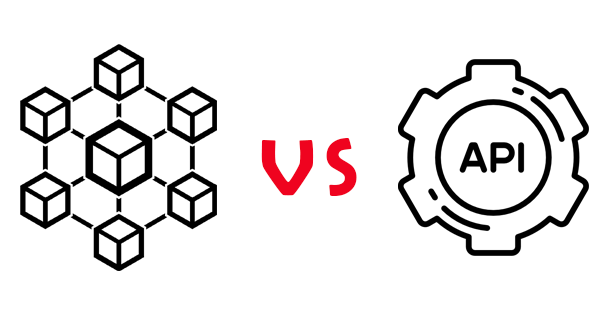Microservices Versus API: A Comparative Analysis
In the rapidly evolving landscape of software development, businesses are constantly seeking innovative ways to build and deliver applications that are scalable, flexible, and capable of meeting the changing needs of users.
Two approaches that have gained significant traction in recent years are microservices and APIs. Microservices and APIs play pivotal roles in the development of modern applications, enabling organizations to build modular, loosely coupled systems that can be easily scaled and maintained.
What are Microservices?
Microservices, also known as the microservices architecture, is an architectural style that structures an application as a collection of small, loosely coupled, and independently deployable services. Each service focuses on a specific business capability and communicates with other services through well-defined APIs. Microservices promote modularity, scalability, and fault isolation, enabling agile development and continuous deployment.
Advantages of Microservices
- Scalability: Microservices allow individual services to scale independently based on specific demand patterns, enabling better resource utilization and cost-efficiency.
- Flexibility: Developers can choose different technologies and programming languages for each microservice, enabling teams to work with their preferred tools and frameworks.
- Fault Isolation: Since microservices are loosely coupled, failures in one service do not impact the entire system, improving fault tolerance and system resilience.
- Continuous Deployment: Microservices facilitate faster release cycles and continuous deployment through their independent deployment units, allowing teams to innovate and iterate rapidly.
What are APIs?
API stands for Application Programming Interface. It defines the set of rules and protocols that enable different software applications to communicate and interact with each other. APIs act as intermediaries, allowing applications to access and utilize specific functionalities, services, or data from other applications, libraries, or platforms.
Types of APIs
- Web APIs: These are APIs that enable communication between web applications, typically using HTTP/HTTPS protocols. Web APIs can be RESTful (Representational State Transfer) or follow other architectural styles.
- Library or Framework APIs: These APIs provide a set of functions, classes, or methods that developers can use to interact with a specific library or framework, such as the Java API or the TensorFlow API.
- Operating System APIs: These APIs allow applications to access and utilize the resources and functionalities provided by an operating system, such as file system APIs or network APIs.
Microservices vs. APIs: Understanding the Differences
Although microservices and APIs are related and often used together, they serve distinct purposes in application development.
Microservices as an Architectural Style
Microservices, as an architectural style, define the way an application is structured and organized. It emphasizes breaking down complex monolithic systems into smaller, independent services. Each microservice operates as a separate application, with its own business logic and data storage. Microservices communicate with each other through APIs, using protocols such as HTTP/HTTPS or messaging systems like RabbitMQ or Apache Kafka.
APIs as a Communication Mechanism
APIs, on the other hand, serve as a communication mechanism that allows different software components or applications to interact with each other. APIs provide a standardized interface for requesting and exchanging data or services. APIs can be implemented within monolithic architectures or as part of microservices-based architectures.
Implementing Microservices with APIs: A Use Case
To better understand how microservices and APIs work together, let's consider an example of an e-commerce application.
Scenario
Suppose we are building an e-commerce platform that consists of several microservices, including Product Catalog, Order Management, User Authentication, and Payment Gateway. These microservices need to communicate with each other to provide the necessary functionalities for the application.
Implementation
- Product Catalog Microservice: This microservice manages product information, such as product details, inventory, and pricing. It exposes a set of APIs for other microservices to retrieve product information, add new products, or update existing ones.
- Order Management Microservice: This microservice handles order placement, order processing, and order tracking. It interacts with the Product Catalog microservice through its APIs to retrieve product details and updates the inventory accordingly.
- User Authentication Microservice: This microservice handles user authentication and authorization. It provides APIs for other microservices to authenticate users and authorize their actions.
- Payment Gateway Microservice: This microservice integrates with external payment providers and handles payment transactions. It communicates with the Order Management microservice through its APIs to process payments and update the order status.
In this scenario, each microservice exposes a set of APIs that define the communication interface with other microservices. The APIs enable seamless data exchange and collaboration between the microservices, ultimately delivering a complete and cohesive e-commerce experience to the users.
Conclusion
Microservices and APIs are two essential components in modern application development. While microservices provide the architectural foundation for building scalable and modular systems, APIs enable seamless communication and interaction between different software components. Understanding the differences between microservices and APIs is crucial for designing efficient and extensible applications.
In conclusion, microservices and APIs are complementary concepts that work together to create flexible, scalable, and interconnected systems. By leveraging microservices and APIs effectively, organizations can build robust and future-proof applications that meet the evolving demands of the digital landscape.


Posting Komentar untuk "Microservices Versus API: A Comparative Analysis"
Posting Komentar
Silahkan komentar dengan bijak jika ada yang ingin ditanyakan.